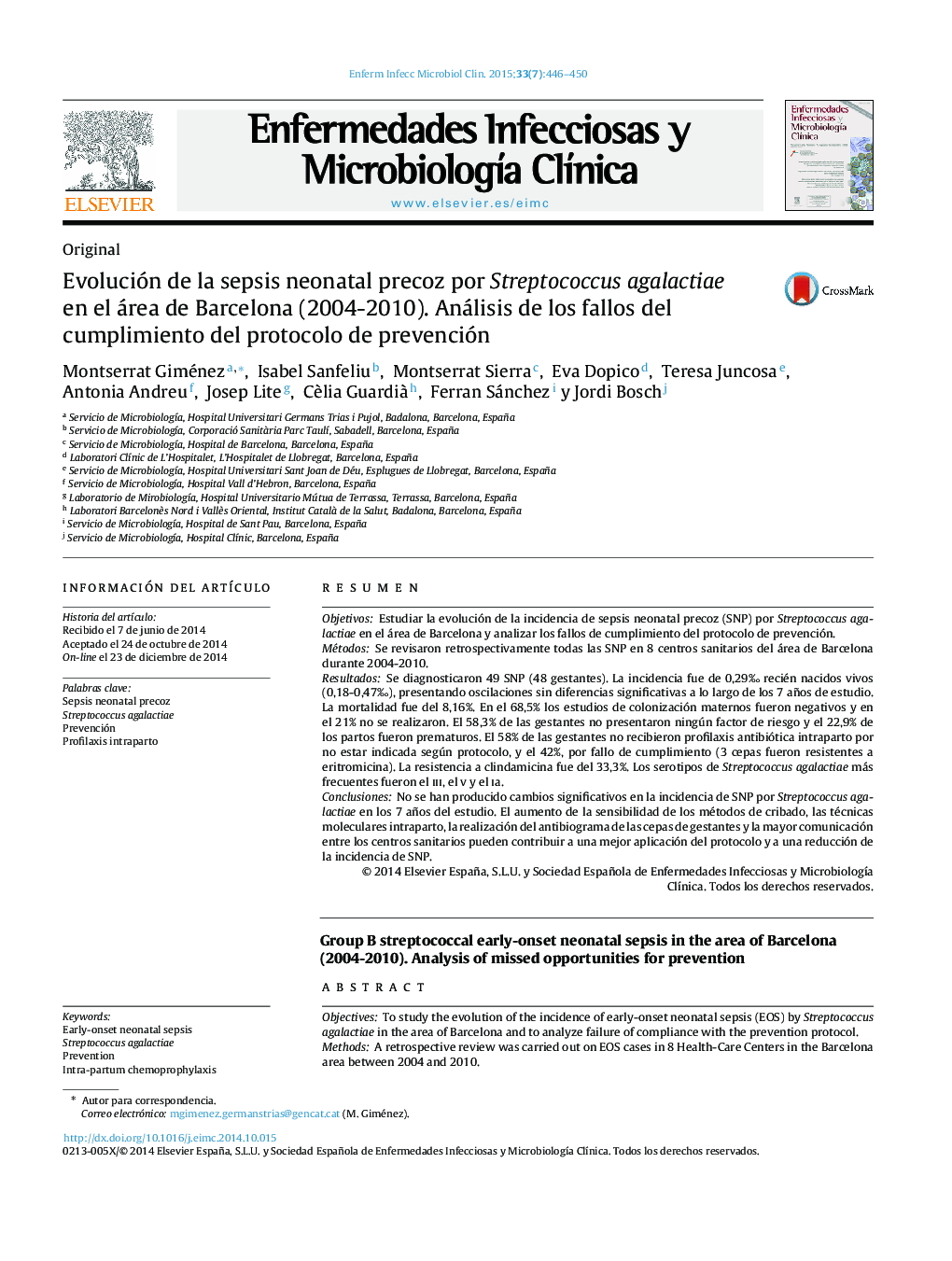| Article ID | Journal | Published Year | Pages | File Type |
|---|---|---|---|---|
| 3400810 | Enfermedades Infecciosas y Microbiología Clínica | 2015 | 5 Pages |
ResumenObjetivosEstudiar la evolución de la incidencia de sepsis neonatal precoz (SNP) por Streptococcus agalactiae en el área de Barcelona y analizar los fallos de cumplimiento del protocolo de prevención.MétodosSe revisaron retrospectivamente todas las SNP en 8 centros sanitarios del área de Barcelona durante 2004-2010.ResultadosSe diagnosticaron 49 SNP (48 gestantes). La incidencia fue de 0,29‰ recién nacidos vivos (0,18-0,47‰), presentando oscilaciones sin diferencias significativas a lo largo de los 7 años de estudio. La mortalidad fue del 8,16%. En el 68,5% los estudios de colonización maternos fueron negativos y en el 21% no se realizaron. El 58,3% de las gestantes no presentaron ningún factor de riesgo y el 22,9% de los partos fueron prematuros. El 58% de las gestantes no recibieron profilaxis antibiótica intraparto por no estar indicada según protocolo, y el 42%, por fallo de cumplimiento (3 cepas fueron resistentes a eritromicina). La resistencia a clindamicina fue del 33,3%. Los serotipos de Streptococcus agalactiae más frecuentes fueron el iii, el v y el ia.ConclusionesNo se han producido cambios significativos en la incidencia de SNP por Streptococcus agalactiae en los 7 años del estudio. El aumento de la sensibilidad de los métodos de cribado, las técnicas moleculares intraparto, la realización del antibiograma de las cepas de gestantes y la mayor comunicación entre los centros sanitarios pueden contribuir a una mejor aplicación del protocolo y a una reducción de la incidencia de SNP.
ObjectivesTo study the evolution of the incidence of early-onset neonatal sepsis (EOS) by Streptococcus agalactiae in the area of Barcelona and to analyze failure of compliance with the prevention protocol.MethodsA retrospective review was carried out on EOS cases in 8 Health-Care Centers in the Barcelona area between 2004 and 2010.ResultsForty-nine newborns from 48 mothers were diagnosed with EOS. The incidence was 0.29‰ living newborns (0.18-0.47‰), with no significant differences in the fluctuations along the 7 years. The mortality rate was 8.16%. In 68.5% cases the maternal colonization studies were negative, and in 21% these studies were not performed. No risk factors were detected in 58.3% of pregnant women, and 22.9% of births were premature. In 58% of cases intra-partum antibiotic prophylaxis was not administered because it was not indicated, and in 42% due to failure to follow the protocol (3 strains were resistant to erythromycin). Resistance to clindamycin was 33.3%. The Streptococcus agalactiae serotypes more frequently isolated were iii, v, and ia.ConclusionsNo significant changes were detected in the incidence of Streptococcus agalactiae EOS in the 7 years of the study. The increased sensitivity of screening methods with the use of molecular techniques, the performance of susceptibility testing of strains isolated from pregnant women, and the improvement of communication between Health-Care Centers, can contribute to a better implementation of the protocol, as well as to reduce the incidence of EOS.
